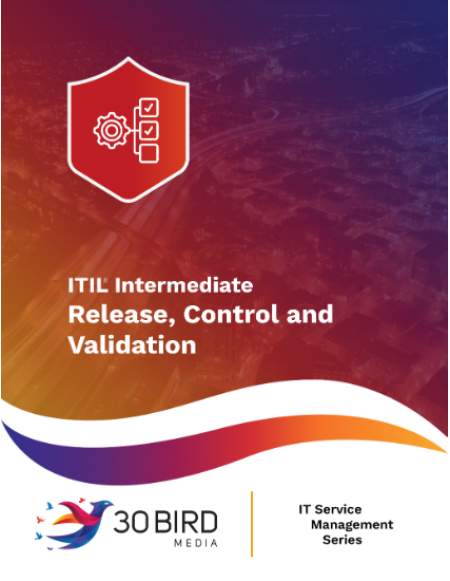Chapter 1: Introduction to Release, Control and Validation
Purpose and objectives of service transition
Scope and value of the service transition phase and interaction with other processes
Aspects considered for developing an effective service transition strategy
Defining service transition lifecycle stages
Key initiatives for effective preparation for service transition
Approach and best practices in planning and coordinating service transition activities
How service transition provides transition process support to stakeholders
Chapter 2: Change Management
Purpose and objectives of change management
Scope and business value of change management
Change management policies
Types of change requests
Role of change models, change proposals and standard changes
Options and considerations for remediation planning
Typical activities involved in managing changes
Methods and techniques associated with each major change management activity
Change management process triggers, inputs, outputs and interfaces
Role of the configuration management system (CMS)
Critical Success Factors and Key Performance Indicators
Challenges and Risks of Change Management
Typical change management day-to-day activities
Managing organization and stakeholder change as an essential part of continual improvement
Chapter 3: Service Asset and Configuration Management
Purpose and objectives of service asset and configuration management
Scope and business value of service asset and configuration management
Service Asset and Configuration Management (SACM) policies and basic concepts and various types of CIs
Use of a configuration management system (CMS)
Activities of asset management
Key SACM process activities and deliverables
Options and considerations for remediation planning
Typical activities involved in managing changes
SACM process triggers, inputs, outputs and interfaces
Information management considerations for SACM
Critical success factors and key performance indicators
Challenges and risks of SACM
Typical SACM daily activities in service operations
Chapter 4: Service Validation and Testing
Purpose and Objectives
Scope and Business Value
SVT Policies
Test Models
Validation and Testing Perspectives
Test Levels and Test Models
Key Activities of SVT Process
Maintaining Test Data and Test Environments
CSFs and KPIs
Challenges and Risks of SVT
Chapter 5: Release and Deployment Management
Purpose and Objectives
Scope and Business Value
RDM Policies
4 Phases of RDM
Key steps for build and test stage
Planning, Performing, Reviewing and Closing Deployment
Triggers, Inputs, Outputs and Interfaces
Information Management
CSFs and KPIs
Challenges and Risks of RDM
Typical RDM Activities in Service Operations
Chapter 6: Request Fulfillment
Purpose and Objectives
Scope and Business Value
Policies, Principles and Basic Concepts
Request fulfillment Activities
Triggers, Inputs, Outputs and Interfaces
Information Management
CSFs and KPIs
Challenges and Risks
Chapter 7: Change Evaluation
Purpose and Objectives
Scope and Business Value
Policies, Principles and Basic Concepts
Process Terminology and Workflow
Perspectives to Consider
Evaluation of Predicted Service Performance
Evaluation Report Contents
Chapter 8: Knowledge Management
Purpose and Objectives
Scope and Business Value
KM policies and use of DIKW structure
KM activities
Triggers, Inputs, Outputs and Interfaces
Role of the SKMS and CMS
CSFs and KPIs
Challenges and Risks
Relationship between CSI & KM
Chapter 9: Roles and Responsibilities
Generic Roles involved in Service Transition
Transition Planning and Support Roles
Change Management Roles
Service Asset and Configuration Management Roles
Release and Deployment Management Roles
Service Validation and Testing Roles
Request Fulfilment Roles
Change Evaluation Roles
Knowledge Management Roles
Chapter 10: Technology and Implementation Considerations
Generic Requirements for Integrated ITSM Technology
Evaluation Criteria for Service Management Tools
RCV Practices for Process Implementation
Challenges, Critical Success Factors and Risks
How to Plan and Implement Service Management Technologies
Technology Considerations
ITIL Release, Control and Validation focuses on the practical application of RCV practices in order to enable the successful planning, testing and implementation of new services that meet the organization’s or users’ needs. RCV provides guidance on developing organizations’ or individuals’ understanding of the ITIL Service Transition processes.
To request the PowerPoints for this course, please e-mail sales@30bird.com.

